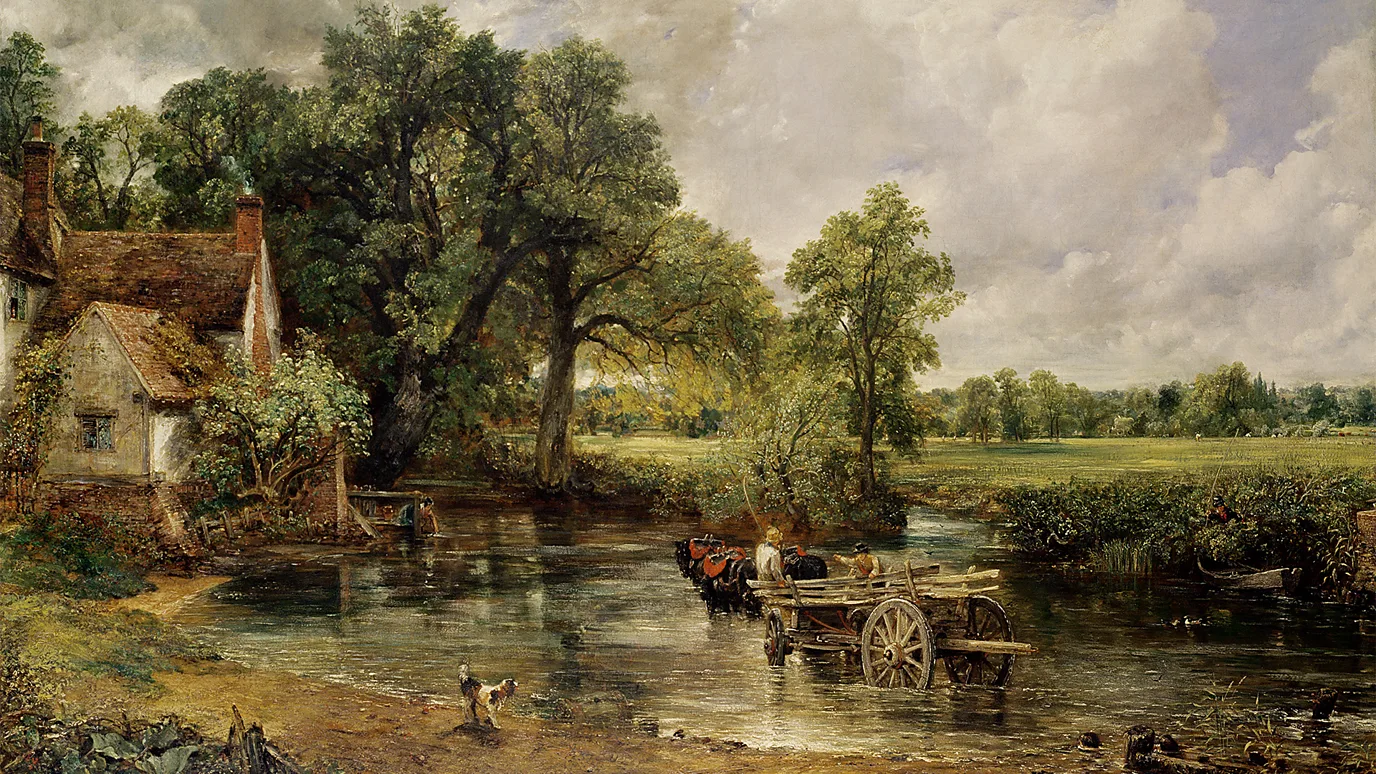The Hay Wain: A Quintessential English Scene?
John Constable’s The Hay Wain (1821) has long been celebrated as the epitome of English pastoral art. Reproduced endlessly on tea towels and biscuit tins, it evokes an idealized countryside seemingly untouched by time. But as art historians and curators delve deeper, the painting’s romanticized vision of rural England begins to unravel, revealing a complex interplay of nostalgia, privilege, and social reality.
“It’s the most celebrated and quintessentially English landscape painting,” says Alice Rylance-Watson, assistant curator for the National Trust. Yet, she cautions, “it’s an idealized image.” Exhibitions such as National Treasures: Constable in Bristol – Truth to Nature and Discover Constable & The Hay Wain at London’s National Gallery have cast fresh light on the layers of meaning behind this iconic artwork.
A Nostalgic Vision
Constable’s attachment to the Suffolk countryside was deeply personal. Growing up near the whitewashed cottage featured in the painting, he romanticized the landscape of his childhood, describing it as “gentle declivities” and “luxuriant meadow flats.” But his depiction of a tranquil rural scene stood in stark contrast to the industrial and social upheavals of his time.
While his contemporary J.M.W. Turner embraced modernity, painting steam trains and industrial progress, Constable chose to look back. His vision of rural life ignored the harsh realities faced by agricultural laborers, who toiled in precarious conditions and faced displacement by machines. The Enclosure Acts, which concentrated land ownership in the hands of the few, further shaped the rural landscape, leaving little common land for the poor.
“Constable’s position as the son of a landowner informed his perspective,” explains Christine Riding, Director of Collections and Research at the National Gallery. “He paints a contented scene where people know their place in society, but this overlooks the hardships and inequalities of rural life.”
Fiction or Reality?
Despite his dedication to portraying nature, Constable’s painting is not a direct representation of Suffolk’s countryside. Elements like the hay wain (actually a wood cart) and the panting dog were added to enhance the composition. Even the iconic millpond was heavily curated, reflecting not a natural landscape but a man-made, managed one.
“It’s a lifelong study of nature,” Riding notes, “but through the medium of oil paint, not optical truth.” Constable’s sketches, gathered over two decades, informed the final work, which was completed in his Hampstead studio. His meticulous studies of cloud formations and light—what he called “skying”—lend the painting its vivid authenticity. Yet, The Hay Wain remains an “evocation” rather than a mirror-like truth.
Changing Contexts
Over the centuries, the painting has been imbued with new meanings. At the time of its creation, it symbolized an English way of life threatened by the Napoleonic Wars and social unrest. More recently, it has become a touchstone for environmental and political activism. In 1983, Peter Kennard’s The Hay Wain with Cruise Missiles reimagined the scene to protest nuclear weapons, while in 2022, climate activists from Just Stop Oil staged a protest by gluing themselves to the painting’s frame.
A Timeless Connection
For all its idealization, The Hay Wain resonates because it captures something universal: the emotional and aesthetic appreciation of the landscape. Constable’s “laborious studies from nature” were an effort to convey not just the appearance but the essence of the countryside he loved.
As Riding observes, “What we see might not be a mirror-like truth of this particular corner of Suffolk, but in terms of Constable’s personal and emotional connection to that landscape, it couldn’t be further from a fake.”
Ultimately, The Hay Wain endures not as a literal depiction of rural England, but as a poignant reminder of how we shape and reshape our understanding of the landscapes we hold dear.
